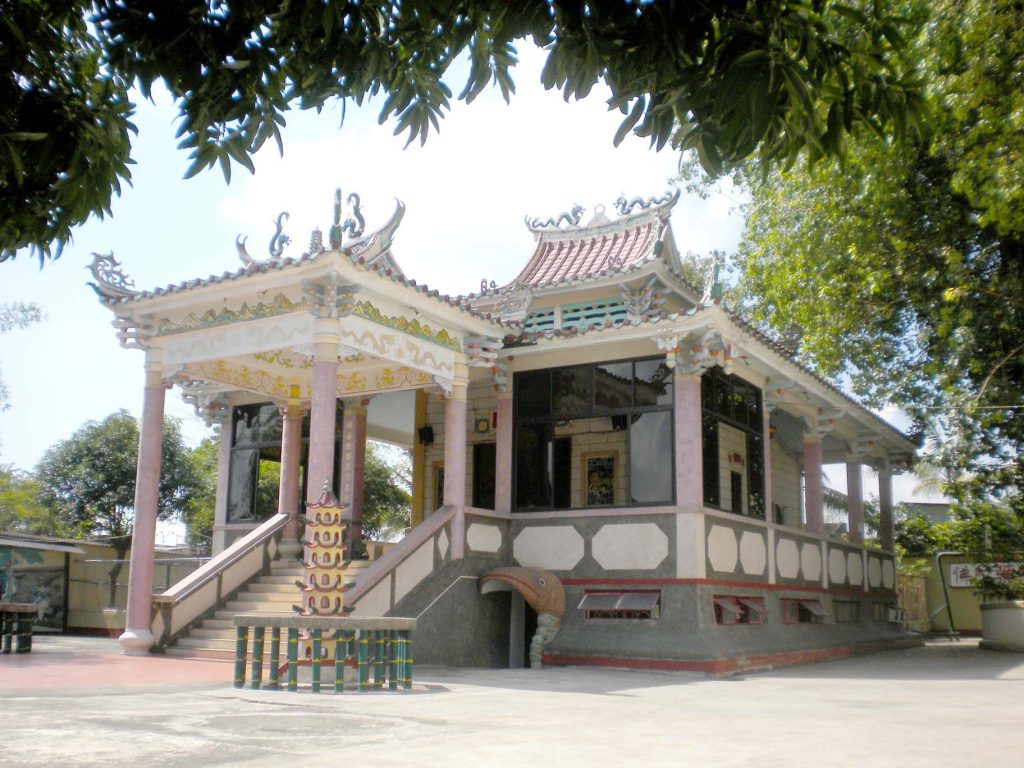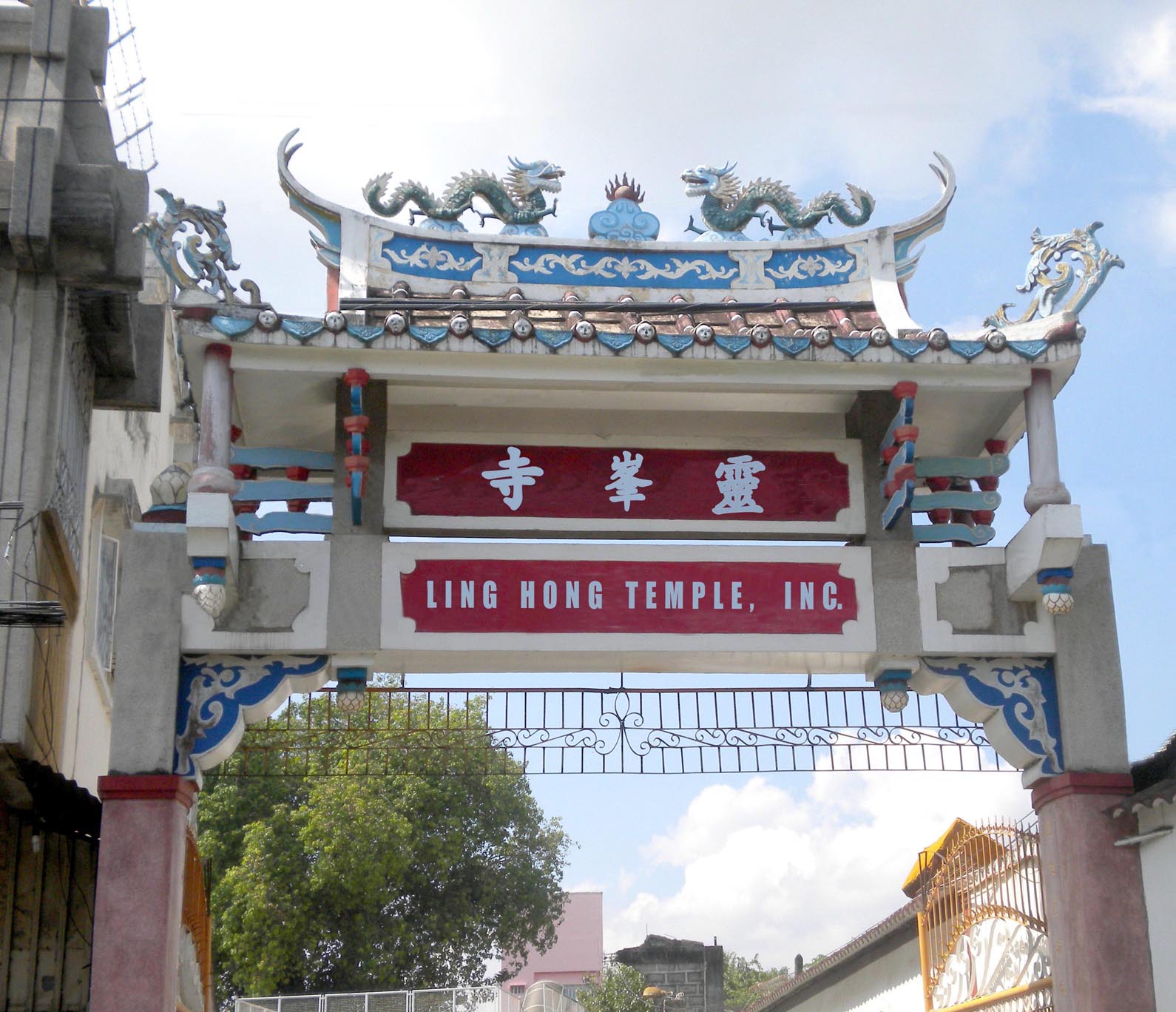Editors Note: This is the 27th of a series about the 36 Chinese Buddhist temples of the Philippines. Much of the information is from a thesis of Venerable Chuanmiao (Hsuan Chuang University, 2008), a Buddhist monk affiliated with the Thousand Buddha Temple in Quezon City.
27. Ling Hong Temple 靈峰寺
Gen. Luna Street, Cabanatuan City, Nueva Ecija
Tel.: (044) 463-1189
Like many communities in Manila, this one in central Luzon started by gathering around an image of Guanyin and chanting together. In 1938, they invited Xingyuan (of Seng Guan Temple) to give them a lecture and at that time, the entire 15-member board of the Chinese Chamber of Commerce took refuge under him.
Since their Guanyin shrine was no longer adequate, they decided to establish the Ling Hong Vihara (靈峰精舍) and invited Xingyuan to be the abbot. That same year, Xingyuan brought a bodhi plant from India and planted it on the property.
The tree has survived to the present day. Xingyuan spent a few years in Cabanatuan to escape the effects of Japanese attack on Manila.
The lay board of directors was formally established only in 1972, and their first project was to construct a temple made of concrete to replace the old wooden structure. Huang Wenbao (黃文鮑) spearheaded this project.
In 1982, a women’s association was organized by Xu Zhuang Liying (許莊麗英).
The building to the side of the temple was built in 1986, and the vihara was renamed a temple in 1992. Renovations were carried out in 2006.
Xingyuan was the titular abbot until his death in 1962. For more than three decades after that there was no monastic residing in the temple, until the lay sister An’an (安安), was invited to take charge of the temple. She had arrived in Manila in 1995 to be on the staff of the Manila Buddha Temple.

Main buildings. The spacious property has a garden, open-air plaza, and a grotto to Guanyin on the side. The temple building is a bungalow with Amitabha Buddha having pride of place, flanked by his two attendant bodhisattvas.
There is a basement which is used for storage. A two-storey building, rectangular in shape, lines the side of the property. It houses the ancestral hall, offices, community center, and living quarters.
Leadership and primary activities. A lay board of directors is elected every few years, but at present, the prime mover of the temple is William Lim, who subsidizes monthly expenses and donates whatever is lacking to keep up temple activities.
The temple is mainly used for private devotions, but on the 1st and 15th of the lunar month, a vegetarian noodle lunch is prepared and offered free to visitors. Once or twice a year, monastics are invited from Manila for a more elaborate chanting service. — First published in Tulay Fortnightly, Chinese-Filipino Digest 26, no. 1-2 (June 18-July 8, 2013): 25.
